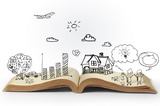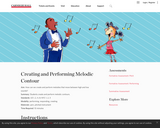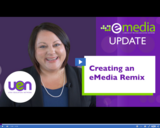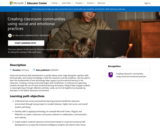
Creating a Digital Story for 2nd Grade by Using Story Jumper
- Subject:
- Literature
- Material Type:
- Assessment
- Author:
- Yuqiao
- Date Added:
- 02/19/2023

Creating a Digital Story for 2nd Grade by Using Story Jumper

This lesson teaches intermediate students to "use the experts" to learn how to revise to create sharp, sensory-rich experiences for their readers.

Students will engage with one another to design, create, and build a mini golf course hole using recycled materials. Once completed, the students will need to explain how their hole works using scientific terminolgy such as force and gravity. This hands-on, fun, creative activity will serve as an assessment tool on what students understand about the concept of force and gravity.

Students learn how to get their voice out on the web when they research issues important to them and compose a persuasive podcast to post online.

Students will explore how to have a positive digital identity. They will demonstrate their learning by creating a digital portfolio that reflects their personal interests, achievements, and goals

This lesson will focus on what a strong password is and how to create one.

In this K-2 Digital Citizenship and Technology Nearpod Drag & Drop activity, students will identify memorable and strong passwords.

This is a lesson plan to help teach students how to create a digital story using the ipad app "Story Creator" The students will watch some examples of differnt digital stories other students have created. Next, students will use previously learned information on animals and their habitats to fill out a storyboard that will help guide them to creating a digital story. Students will draw pictures and write text to accompany these pictures. The lesson will end with students presenting about their animal they chose and its habitat through means of a digital story.

This recommended practice focuses on how teachers can foster an engaged community of writers by writing together with students, providing choice, and encouraging collaboration and feedback among students. This presentation gives ideas about how to create an engaged community where students feel safe. The two tools associated with this recommended practice are designed to help teachers plan collaborative writing lessons and reflect on current practices in building a community of writers.

This article discusses the importance of student feedback in creating a respectful, equitable classroom.

In this video segment from Nature, learn the geological process by which the next Hawaiian island will be formed.

Students publish their work in an electronic portfolio, which enables them to respond to each other's content online.

Students create and perform melodic contours.

Students create and perform melodic contours.

In this eMedia update, Katie Blunt teaches us how to remix templates! Remixing means that you can find a resource you like and edit it to fit your classroom. Create your perfect lesson today!

Use this path to learn the fundamentals of how technology helps support social emotional learning in the classroom. Creating a strong community begins with mindfulness. It continues by supporting students through the use of social emotional learning techniques. Flipgrid helps engage students in meaningful ways through reflection activities. Lastly, we tie it all together by empowering educators in the hybrid classroom environment

Katie Blunt is back to teach us how to create your own Open Educational Resource through eMedia. These resources are easy to create, share and remix. Start building your resource today!

In this eMedia Update, Katie Blunt teaches us how to submit a web resource to eMedia. Web resources can be aligned to Utah curriculum standards but must be openly licensed.

This lesson plan will cover in part standard 2.G.3. We will introduce the terms "half" and "fourths". Students will discriminate between equally divided wholes and nonequally divided wholes. Students will be assessed to determine if they can accurately identify and divide into halves and fourths.

This instructions sheet steps students through the process of using Adobe Express's text-to-image and text effects features.